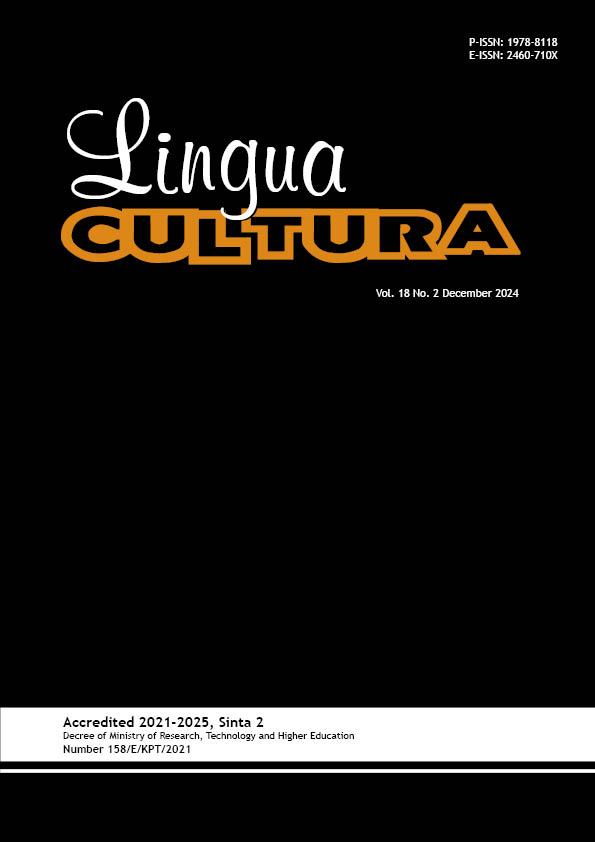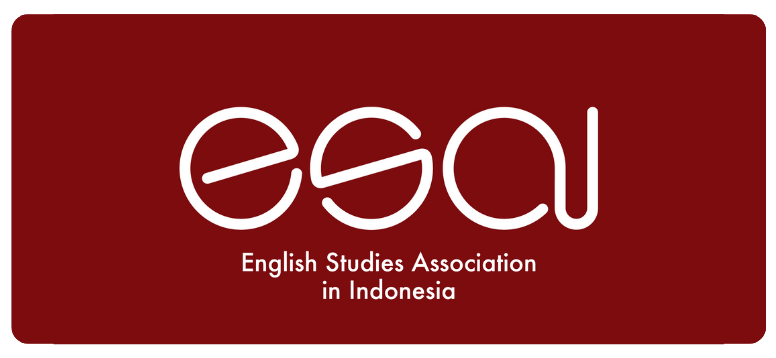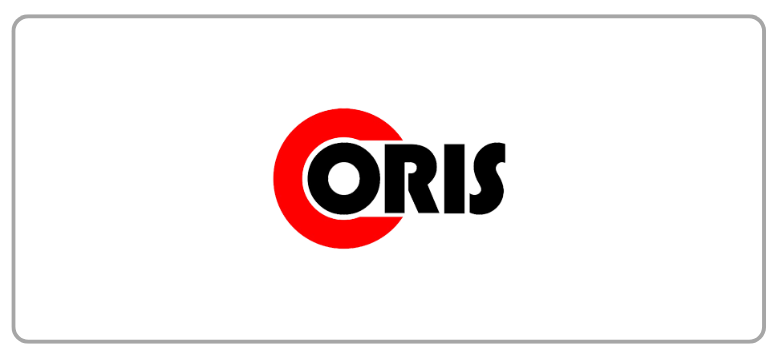Representation of Female Personality in the Movie Naga: A Study of Karen Horney's Feminine Psychology
DOI:
https://doi.org/10.21512/lc.v18i2.12411Keywords:
female personality, feminine psychology, Karen Horney, movie, representationAbstract
Female characters in movies can be studied using Karen Horney's feminine psychology study. Horney refuted the understanding of traditional psychological theories on women about castration complexes and penis envy, which later resulted in female inferiority. This research is important to clarify the existence of women in movies using feminine psychology theory. The research aimed to identify how female characters are represented in the movie Naga by Meshal Al Jaser, particularly about their neurotic desires—typically associated with men and to describe the forms of treatment or behavior that reflect these neurotic desires. The research applied a descriptive qualitative research method with Karen Horney's feminine psychology analysis approach. In obtaining data, researchers took primary and secondary data sources. The researcher also applied watch, read, and listen techniques to collect data. The research used three data analysis procedures: data reduction, data presentation, and conclusion drawing. The results show nine data from the dialogues and scenes of the movie Naga that contain neurotic desires to become men in female characters, such as taking off her veil, slapping a man, being disgusted by kissing, forcing a man, smoking, rebelling, commanding a man, threatening a man, and insulting a man. This research provides a new perspective that neurosis can form a reaction to social injustice, especially in a patriarchal society.
References
Ahmadi, A. (2019). Metode penelitian sastra: Perspektif monodisipliner dan interdisipliner. Graniti.
Ahmadi, A. (2020). Sastra dan film China: Perspektif apresiatif. Graniti.
Ahmadi, A. (2021). Psikologi Sastra. Unesa University Press.
Ahmadi, A., & Kurniawan, B. (2021). Sastra China: Studi interdisipliner. Graniti.
Ahmadi, A., Sudikan, S. Y., Kusumarasdyati, Wibisono, G., & Renfei, X. (2021). Sastra, film China, dan psikologi. Graniti.
Alwisol, A. (2018). Psikologi kepribadian. UMM Press.
Arafah, F. I., & Wedawati, M. T. (2020). Karakter tokoh utama dalam Film Send Me to the Cloud《送我上青云》Sòng Wǒ Shàng Qīngyún karya Teng Concong (Kajian psikologi Karen Horney). Jurnal Bahasa Mandarin, 4(2). https://ejournal.unesa.ac.id/index.php/manadarin/article/view/41765.
Arawi, F. A. (2022). Perbandingan representasi perempuan di parlemen Indonesia dan Filipina. Politeia: Jurnal Ilmu Politik, 14(2), 74-85. https://doi.org/10.32734/politeia.v14i2.8600.
Asthereni, P. V. S. Y. (2020). The representation of women in Li Young-Lee’s poems. OKARA: Jurnal Bahasa dan Sastra, 14(1), 39-50. https://doi.org/10.19105/ojbs.v14i1.3137.
Aziza, L. F., & Amatullah, M. N. (2019). Praanggapan dan fungsi bahasa pada tuturan tokoh dalam film Dzeeb karya Naji Abu Nowar. ALSUNIYAT: Jurnal Penelitian Bahasa, Sastra, dan Budaya Arab, 2(2), 109-125. https://doi.org/10.17509/alsuniyat.v2i2.23667.
Bertens, K. (2006). Psikoanalisis Sigmund Freud. Gramedia Pustaka Utama.
Bintari, A. (2022). Partisipasi dan representasi perempuan dalam penyelenggaraan pemilu. Jurnal Keadilan Pemilu, 2(1), 13-22. https://doi.org/10.55108/jkp.v2i1.142.
Dewi, D. M. (2019). The representation of patriarchy in Indonesian children folk tales from Sumatra Island. Lingua Cultura, 13(3), 167-172. https://doi.org/10.21512/lc.v13i3.5646.
Elsha, D. D. (2019). Representasi perempuan dalam film Spectre. Jurnal PIKMA: Publikasi Ilmu Komunikasi Media Dan Cinema, 1(2), 63-77. https://doi.org/10.24076/PIKMA.2019v1i2.387.
Emzir, Rohman, S., & Wicaksono, A. (Ed.). (2018). Tentang Sastra: Orkestrasi Teori dan Pembelajarannya. Garudhawaca.
Fajar, N., & Rasyidah. (2021). Dinamika sosial kedudukan perempuan di Arab Saudi era Raja Salman. TAKAMMUL: Jurnal Studi Gender dan Islam serta Perindungan Anak, 10(1), 47-58.
Fatmawaty, L. S. W. A., & Alim, C. N. (2020). Virtual sphere: A site to negotiate the image of Lengger Banyumas. Lingua Cultura, 14(2), 261-266. https://doi.org/10.21512/lc.v14i2.6837.
Fitriani, I., Diman, P., Perdana, I., Misnawati, & Jumadi. (2023). Representasi perempuan abad 21 dalam novel Jalan Panjang Menuju Pulang karya Pipiet Senja kajian: Feminisme eksistensialis. Bhinneka: Jurnal Bintang Pendidikan Dan Bahasa, 1(4), 190-207. https://doi.org/10.59024/bhinneka.v1i4.390.
Freud, S. (2014). On the sexual theories of children. White Press.
Freud, S. (2017). Three Essays on the theory of sexuality: The 1905 edition. Verso Books.
Hall, S. (Ed.) (1997). Representation: Cultural representations and signifying practices. Sage Publications.
Hanifah, A. N., & Agusta, R. (2021). Representasi perempuan dalam film pendek "Tilik." Jurnal Semiotika, 15(2), 97-111.
Hanifah, N., & Khoiroh, H. (2024). Konflik dalam film Naga karya Meshal Aljaser (tinjauan intrinsik). Prosiding Konferensi Nasional Mahasiswa Bahasa Dan Sastra Arab, 1, 1354-1371.
Haque, A., Maimunah, I., & Wargadinata, W. (2021). (Ibnu Zaydūn wa Taqālīd Asy-Syi’ri Al-Andalusī). ALSUNIYAT: Jurnal Penelitian Bahasa, Sastra, Dan Budaya Arab, 4(2), 129-150.
Hargita, B. S., & Nurhadi. (2022). The reflection of cinderella complex on women in Kenanga novel by Oka Rusmini. International Journal of Linguistics, Literature and Translation (IJLLT), 5(12), 76-83.https://doi.org/10.32996/ijllt.2022.5.12.10.
Hargita, B. S., & Nurhadi. (2023). Refleksi Cinderella Complex pada diri tokoh perempuan dalam novel Bumi Manusia karya Pramoedya Ananta Toer. KEMBARA: Jurnal Keilmuan Bahasa, Sastra, dan Pengajarannya, 9(1), 24-39. https://doi.org/10.22219/kembara.v9i1.23757.
Hermawan, D., Ronda, A. M., & Sigit, R. R. (2023). Multimodality discourses of the miss universe beauty pageant as an arena of cultural production. International Journal of Environmental, Sustainability, and Social Science, 4(4), 1131-1136. https://doi.org/10.38142/ijesss.v4i4.706.
Hidayat, N. A., Mahmudi, Y., & Soekarba, S. R. (2022). Vision 2030: Saudi Arabia’s Modernization. Center of Middle Eastern Studies (CMES): Jurnal Studi Timur Tengah, 15(2), 137-148. https://doi.org/10.20961/cmes.15.2.62857.
Horney, K. (2023). Psikologi Feminin: Perjalanan, Pergulatan, Perdebatan, dan Pencarian. IRCiSoD.
Indradjaja, N., Chamdani, & Syafi’i. (2022). The stereotyping representation of Kensi Blye’s character in television crime drama series NCIS: Los Angeles. Lingua Cultura, 16(1), 1-7. https://doi.org/10.21512/lc.v16i1.7671.
Jaya, A., & Pratama, M. R. A. (2021). The representation of indonesian women in contemporary travel writing: A study of discourse on gender and travel writing. Poetika: Jurnal Ilmu Sastra, 9(1), 62-75. https://doi.org/10.22146/poetika.v9i1.60700.
Lefaan, A. V., & Handayani, T. (2022). Jati diri perempuan Fakfak dalam tradisi lisan Etnik Mbaham Matta Wuh. KEMBARA: Jurnal Keilmuan Bahasa, Sastra, Dan Pengajarannya, 8(2), 530-541. https://doi.org/10.22219/kembara.v8i2.30311.
Lestari, T., Halil, M. A., & Hilmi, H. S. (2021). Kuasa patriarki dalam novel Genduk karya Sundari Mardjuki. Gramatika: Jurnal Ilmiah Kebahasaan dan Kesastraan, 9(2), 111-119.
Marwah, S., & Pratiwi, O. C. (2022). Representasi perempuan pada pemilihan kepala daerah: Ikhtisar pilkada serentak di Jawa Tengah 2020. Politika: Jurnal Ilmu Politik, 13(1), 101-118. https://doi.org/10.14710/politika.13.1.2022.101-118.
Maulidah, M., & Septiana, H. (2023). Perlawanan perempuan Suku Dani terhadap budaya patriarki dalam novel Sali karya Dewi Linggasari kajian feminisme: Psikoanalisis Karen Horney. Bapala, 10(4), 100-110.
Mawarni, H., & Sumartini. (2020). Citra wanita tokoh utama Rani novel Cerita Tentang Rani karya Herry Santoso kajian kritik sastra feminis. Jurnal Sastra Indonesia, 9(2), 137-143. https://doi.org/10.15294/jsi.v9i2.30290.
Mubarokati, R. A. (2022). Potret perjuangan perempuan oleh Isra Hadid dan Deya Ra’Ad dalam a Woman Is No Man karya Etaf Rum. Adabiyyāt: Jurnal Bahasa Dan Sastra, 6(1), 19-41. https://doi.org/10.14421/ajbs.2022.06102.
Muhidinla, S., Nugroho, B. A., & Yusriansyah, E. (2023). Perlawanan tokoh utama perempuan dalam novel Laksamana Malahayati Sang Perempuan Keumala karya Endang Moerdopo: Kajian feminisme psikoanalisis Karen Horney. Ilmu Budaya: Jurnal Bahasa, Sastra, Seni Dan Budaya, 7(3), 907-914.
Munjariyati, F. S., Supriyanto, R. M. T., & Setyaningsih, N. H. (2022). Urban women’s resistance in Andina Dwifatma’s novel entitled Lebih Senyap dari Bisikan : Karen Horney’s feminist psychoanalysis approach. Seloka: Jurnal Pendidikan Bahasa Dan Sastra Indonesia, 11(3), 345-352.
Nugroho, B. A. (2019). Perlawanan perempuan terhadap dominasi patriarki dalam novel Geni Jora karya Abidah El Khalieqy kajian feminisme psikoanalisis Karen Horney. Jurnal Sastra Indonesia, 8(2), 148-156. https://doi.org/10.15294/jsi.v8i2.33719.
Padmarintan, S., & Roselani, N. G. A. (2024). Discourse analysis of Miss Universe 2018-2023’s winning answers. Wiralodra English Journal, 8(1), 115-128. https://doi.org/10.31943/wej.v8i1.279.
Pramudibyanto, H. (2017). Keseimbangan, kekuasaan, dan pengaruh dalam konteks komunikasi organisasi. Prosiding Seminar Nasional Pendidikan, Sains, Dan Teknologi, 51-60.
Pandangan Jogja. (2020). Apa makna perempuan Arab Saudi merokok di tempat umum? Kumparan. https://kumparan.com/pandangan-jogja-com/apa-makna-perempuan-arab-saudi-merokok-di-tempat-umum-1srBkaDAZYB.
Purwanti, N., & Anis, M. (2022). Persepsi mahasiswa terhadap gerakan feminisme liberal (Studi keterlibatan mahasiswi dalam organisasi internal Universitas Muhammadiyah Sorong). JUPEIS : Jurnal Pendidikan Dan Ilmu Sosial, 1(3), 152-156. https://doi.org/10.55784/jupeis.vol1.iss3.161.
Putra, M. R. R., & Burhannudin, M. (2022). Ketidakadilan terhadap peran wanita pada cerpen “Nephilim” dalam kumpulan cerpen “Striptis di Jendela” karya Saroni Asikin. Jurnal Sastra Indonesia, 11(3), 209-218. https://doi.org/10.15294/jsi.v11i3.48333.
Putri, A., & Nurhajati, L. (2020). Representasi perempuan dalam kukungan tradisi Jawa pada film Kartini karya Hanung Bramantyo. ProTVF, 4(1), 42-63. https://doi.org/10.24198/ptvf.v4i1.24008.
Rarasati, I., & Zawawi, M. (2024). Critical discourse analysis on representation of Arab Spring in the movie Alephia 2053. Lingua Cultura, 18(1), 11-19. https://doi.org/10.21512/lc.v18i1.10743.
Rosyadi, F. I., & Ilmi, M. U. (2021). E-Learning: An implementation for Arabic learning during the Covid-19 pandemic. ALSUNIYAT: Jurnal Penelitian Bahasa, Sastra, dan Budaya Arab, 4(1), 47-57. https://doi.org/10.17509/alsuniyat.v4i1.32259.
Sadriah, S., Juanda, J., & Saguni, S. S. (2022). Problem batin Perempuan dalam Novel Perempuan yang Menangis kepada Bulan Hitam karya Dian Purnomo perspektif psikologi feminis. Human: South Asean Journal of Social Studies, 2(2), 177-194.
Salvianny, F. N., & Nurcahyani, E. (2020). Women’s resistance towards oppression in Etaf Rum’s A Woman Is No Man. OKARA: Jurnal Bahasa Dan Sastra, 14(2), 239-254. https://doi.org/10.19105/ojbs.v14i2.3847.
Sandy, F. P. M., Syafa’ah, D., & Amrullah, L. (2022). Erich Fromm’s psychoanalytic theory: Psychology of character in Mu’tamar Al-Hub’s short story “In a Love Banquet” by Taufiq Al-Hakim. ALSUNIYAT: Jurnal Penelitian Bahasa, Sastra, Dan Budaya Arab, 5(2), 162-183. https://doi.org/10.17509/alsuniyat.v5i2.34937.
Sari, H., Hafid, A., Kartini, Palangngan, T., & Nurhayati, A. (2021). The existence of women on the Murderer in Four Stages by Mouly Surya. RETORIKA: Jurnal Bahasa, Sastra, Dan Pengajarannya, 14(2), 110-124. https://doi.org/10.26858/retorika.v14i2.18881.
Sari, I. P., & Udasmoro, W. (2020). Visual pleasure in Kawabata Yasunari’s novella House of the Sleeping Beauties. Lingua Cultura, 14(2), 187-193. https://doi.org/10.21512/lc.v14i2.6601.
Setyanto, T., Andayani, & Wardani, N. E. (2021). The image of women in Hanindawan’S Lampoe Plenthong 15 Watt drama script. RETORIKA: Jurnal Bahasa, Sastra, Dan Pengajarannya, 14(1), 21-31. https://doi.org/10.26858/retorika.v14i1.15321.
Sihombing, L. H. (2021). Rethinking the art of tattoo: A perspective of Indonesian women tattoo community. Lingua Cultura, 15(2), 155-165. https://doi.org/10.21512/lc.v15i2.7334.
Siregar, F. L., Henni, & Comara, S. (2021). The representation of gender in a textbook entitled When English Rings a Bell. Eralingua: Jurnal Pendidikan Bahasa Asing dan Sastra, 5(1), 93-106. https://doi.org/10.26858/eralingua.v5i1.13664.
Sukendra, I. (2021). Culture-shaped language of male and female writers:; A comparative study of English and Bahasa Indonesia. Lingua Cultura, 15(1), 67-72. https://doi.org/10.21512/lc.v15i1.7077.
Sumekto, D. R., Putri, N. S., & Munifah, I. Z. (2023). Lecturers’ narrative writing teachability as proven in students’ short story performance. Lingua Cultura, 17(2), 167-180. https://doi.org/10.21512/lc.v17i2.9794.
Supiastutik, S., WSWW, D. P., & Ramadani, O. P. C. (2023). Gender stereotypes in Boyd Smith’s the Story of Pocahontas and Captain John Smith: A Greimas’ Actantial model. Lingua Cultura, 17(1), 49-57. https://doi.org/10.21512/lc.v17i1.8574.
Syarif, N. (2022). Kepribadian tokoh Saidi dalam novel Calabai (Kajian psikologi sastra Carl Jung). Jurnal Salaka: Jurnal Bahasa, Sastra, dan Budaya Indonesia, 4(2), 69-75. https://doi.org/10.33751/jsalaka.v4i2.6801.
Wahyuddin, I. (2018). Perkembangan Islam Arab Saudi. TASAMUH: Jurnal Studi Islam, 10(2), 423-441. https://doi.org/10.47945/tasamuh.v10i2.81.
Warsito, A., & Wulandari, S. (2022). Konsep pemerintahan Arab Saudi dan kebijakan visi 2030. Tanjak: Sejarah dan Peradaban Islam, 2(3), 231-241. https://doi.org/10.19109/tanjak.v2i3.14024.
Wibowo, J. M., Kesek, M. A., Tumandung, K., & Aditama, M. H. R. (2022). Dampak perilaku sosial mengenai pandangan masyarakat terhadap kesetaraan gender. JUPE: Jurnal Pendidikan Mandala, 7(4), 1124-1128. https://doi.org/10.58258/jupe.v7i4.4378.
Wulandari, A., & Rahmawati, W. (2020). Representasi perempuan Jawa Siti Walidah dalam film Nyai Ahmad Dahlan. SEMIOTIKA, 14(2), 111-223.
Yulianeta, Y., & Ismail, N. H. (2022). Representasi Perempuan Dalam Novel-Novel Pramoedya Ananta Toer. SEMIOTIKA, 23(2), 107-122. https://doi.org/10.19184/semiotika.v23i2.31472.
Downloads
Published
How to Cite
Issue
Section
License
Copyright (c) 2024 Yasminia Hirawati, Mohammad Zawawi

This work is licensed under a Creative Commons Attribution-ShareAlike 4.0 International License.
Authors who publish with this journal agree to the following terms:
a. Authors retain copyright and grant the journal right of first publication with the work simultaneously licensed under a Creative Commons Attribution License - Share Alike that allows others to share the work with an acknowledgment of the work's authorship and initial publication in this journal.
b. Authors are able to enter into separate, additional contractual arrangements for the non-exclusive distribution of the journal's published version of the work (e.g., post it to an institutional repository or publish it in a book), with an acknowledgment of its initial publication in this journal.
c. Authors are permitted and encouraged to post their work online (e.g., in institutional repositories or on their website) prior to and during the submission process, as it can lead to productive exchanges, as well as earlier and greater citation of published work.
USER RIGHTS
All articles published Open Access will be immediately and permanently free for everyone to read and download. We are continuously working with our author communities to select the best choice of license options, currently being defined for this journal as follows: Creative Commons Attribution-Share Alike (CC BY-SA)


















